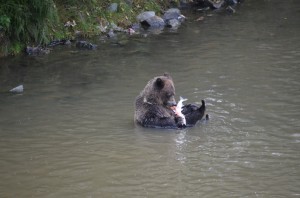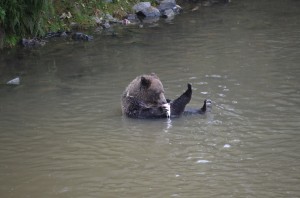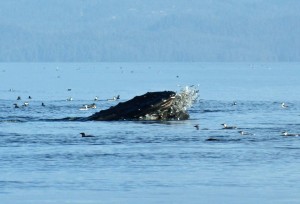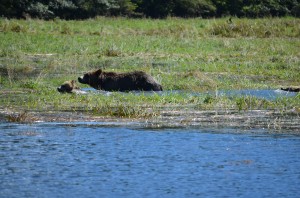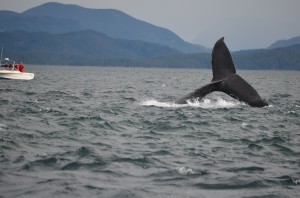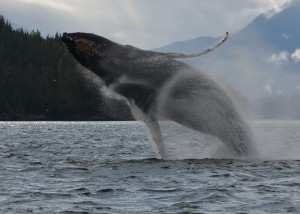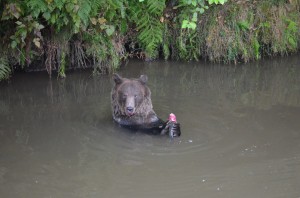
 The why of this grizzly bear’s style is that her front paw was damaged in a fight with another bear so she is unable to hold the salmon against a rock and balance to eat. She is an excellent fisher and catches all the salmon she can eat and is getting quite fat in preparing for hibernation. As time has progressed she has become very adept and developed her own fishing and eating methods and it is time that will determine if she heals over the winter and we see her back next year.
The why of this grizzly bear’s style is that her front paw was damaged in a fight with another bear so she is unable to hold the salmon against a rock and balance to eat. She is an excellent fisher and catches all the salmon she can eat and is getting quite fat in preparing for hibernation. As time has progressed she has become very adept and developed her own fishing and eating methods and it is time that will determine if she heals over the winter and we see her back next year.
